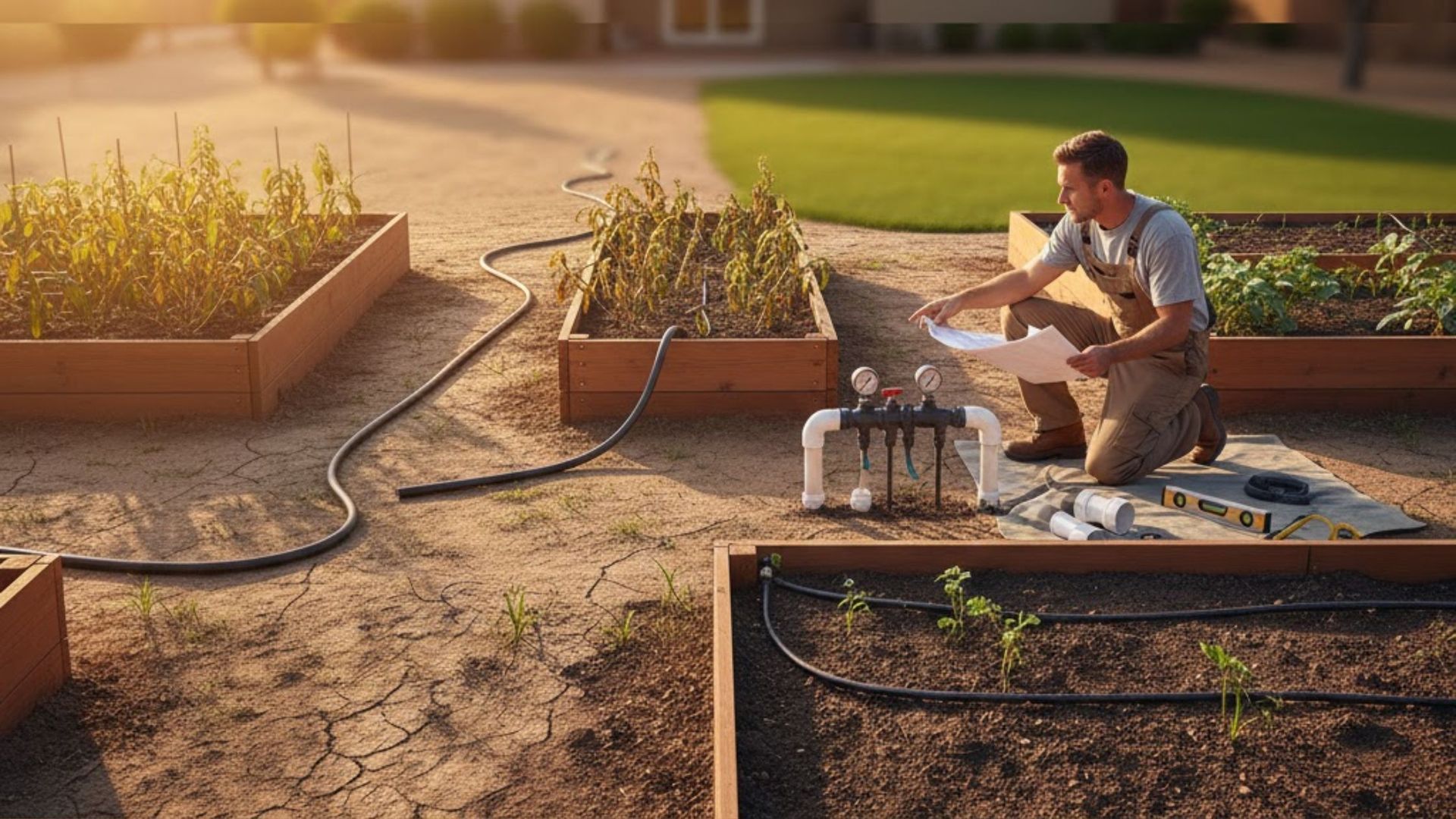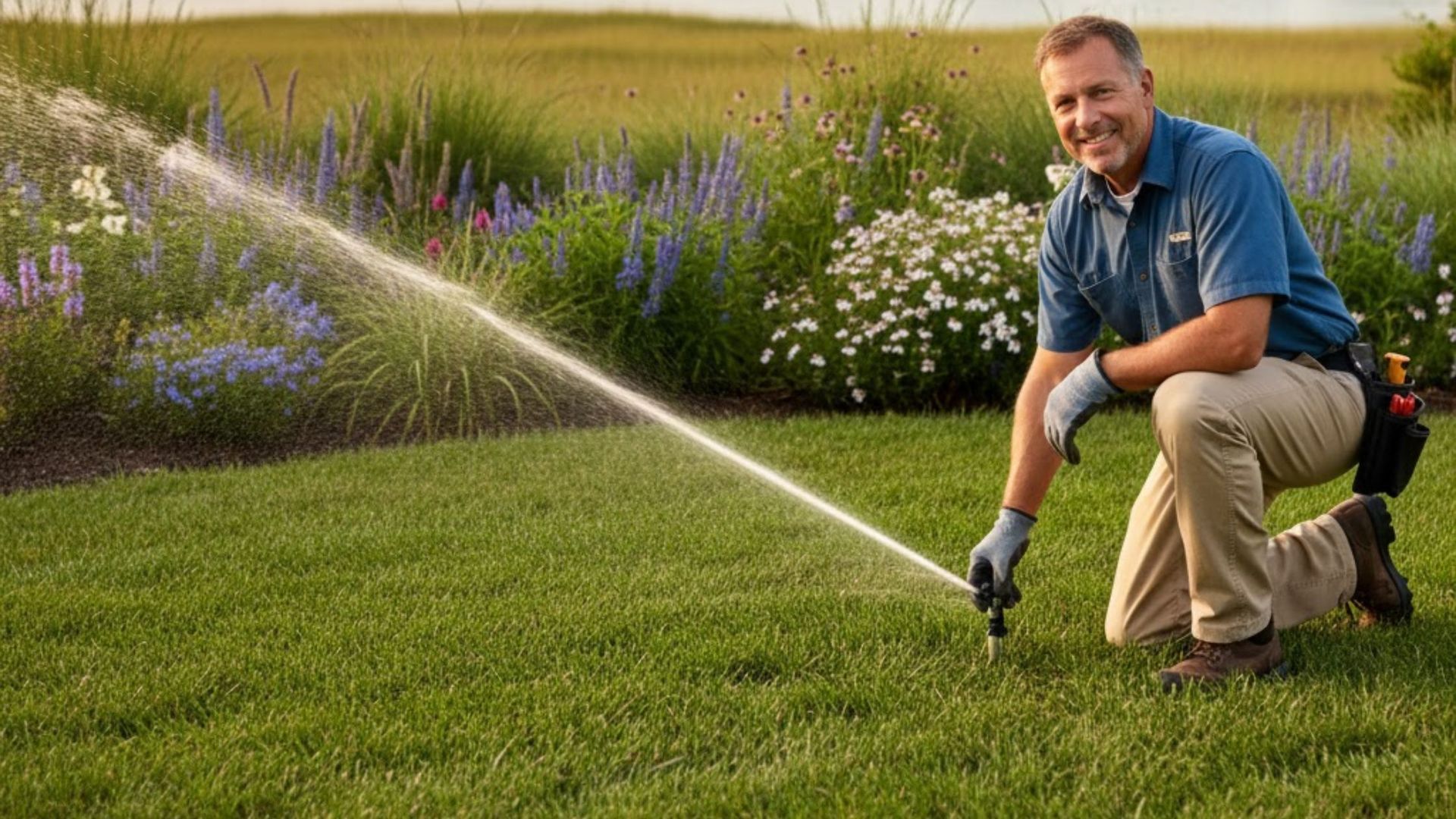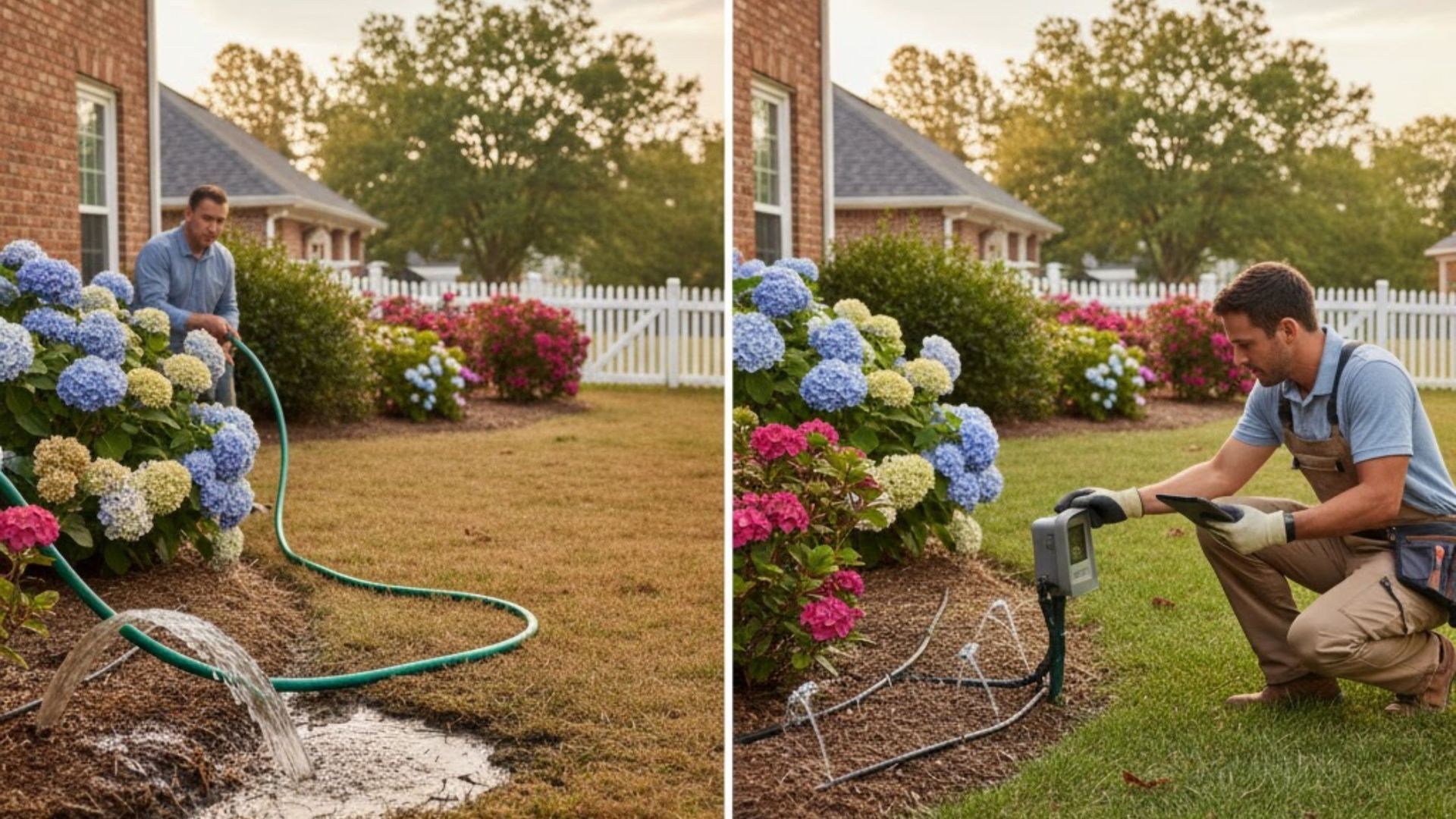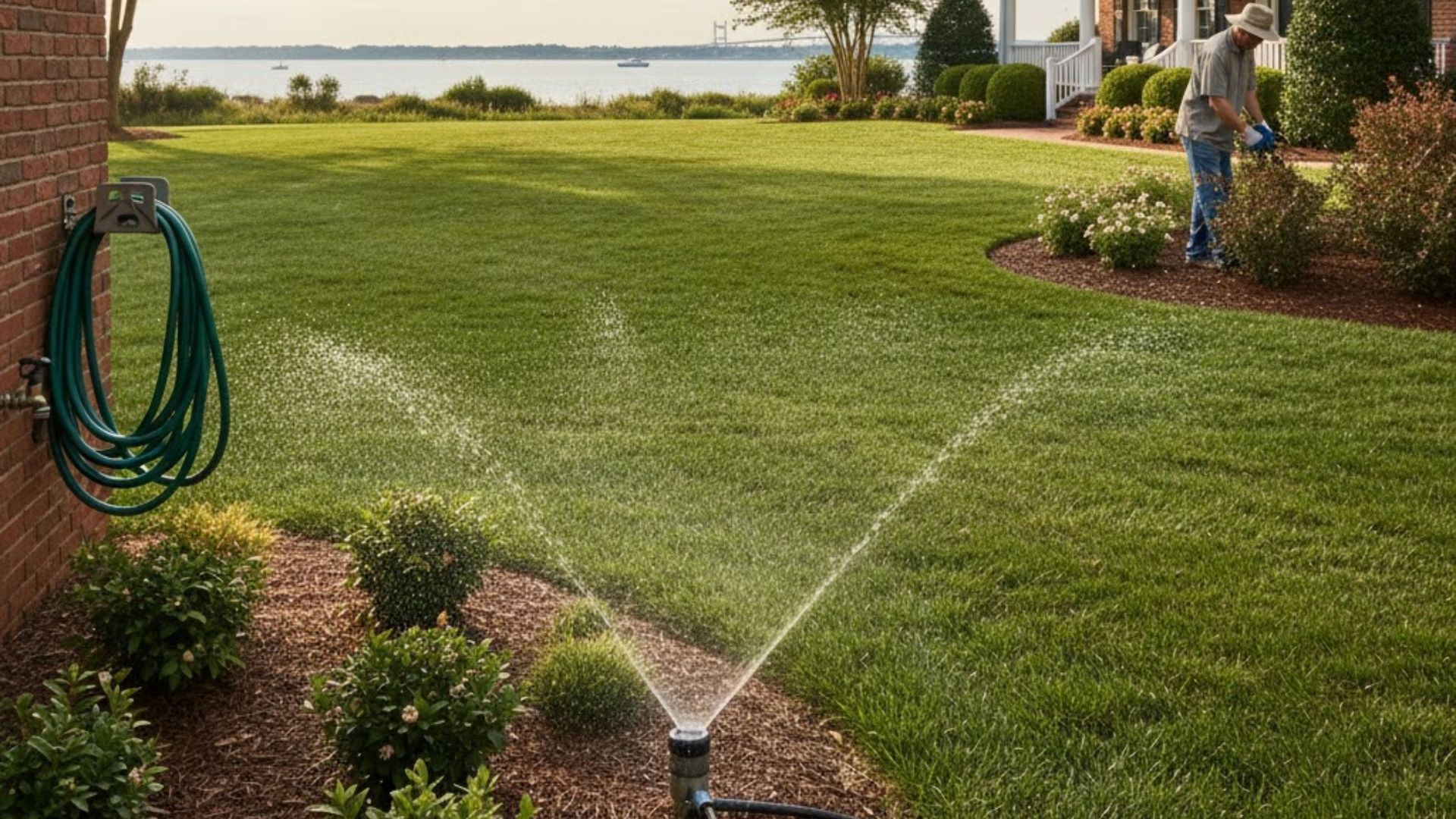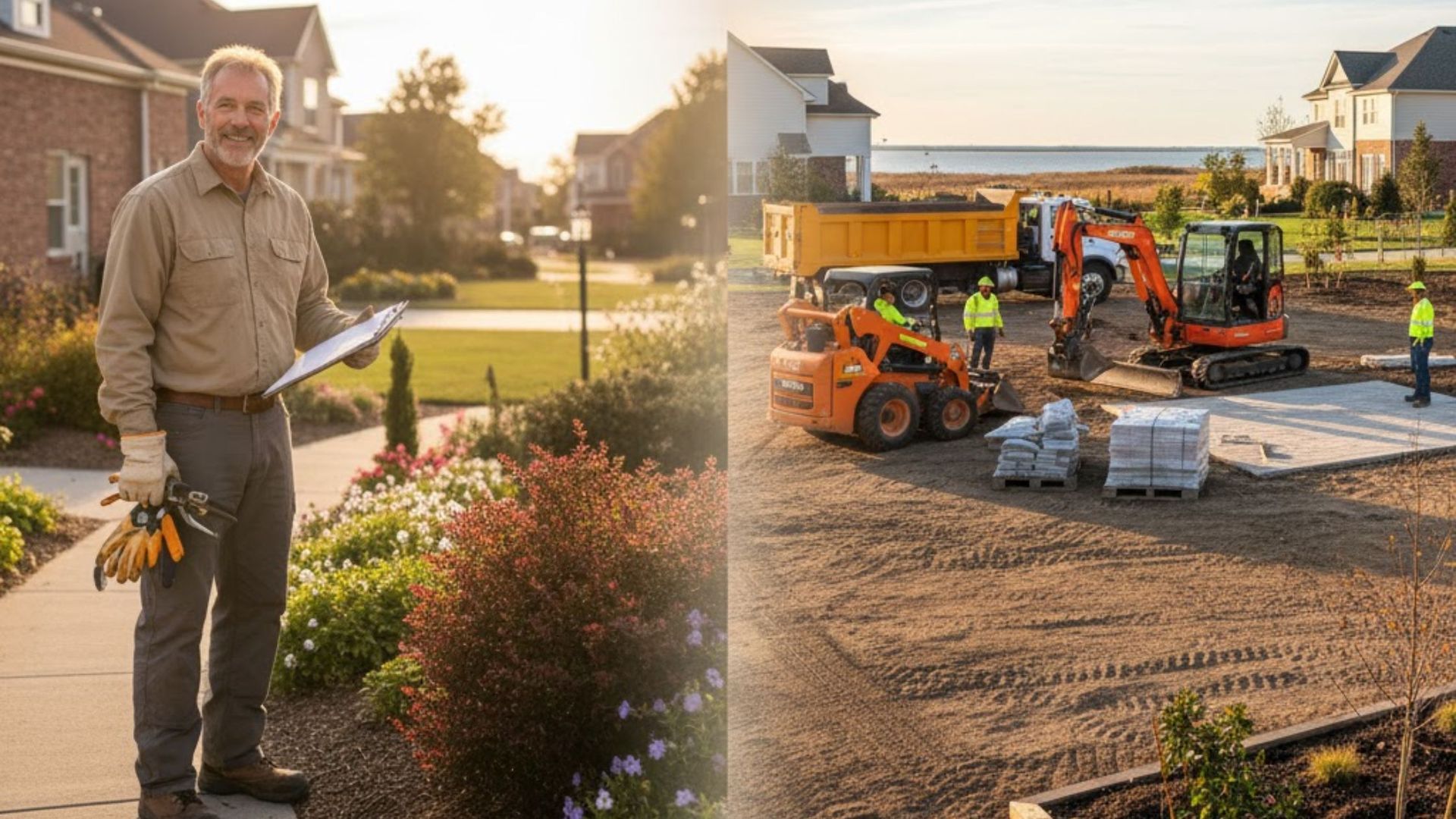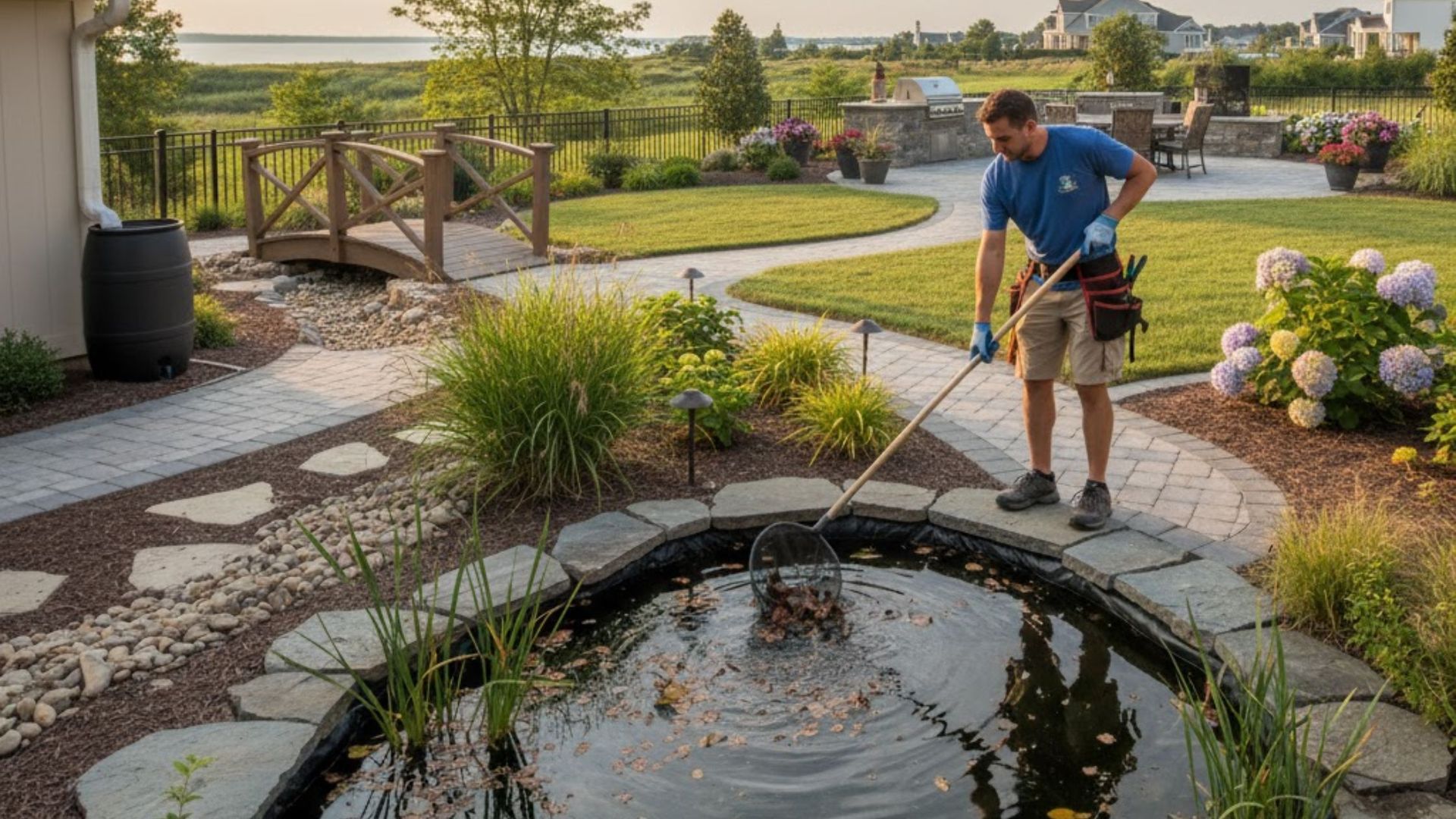What’s the Difference Between Yard Grading and Land Leveling in Hampton Roads Properties?

The fundamental difference between yard grading and land leveling is that grading focuses on creating a specific slope to control water flow and prevent damage, while leveling aims to achieve a flat, smooth, uniform surface for aesthetic or installation purposes. When managing water around your home in Virginia, it is almost always professional yard grading that is required, as the goal is to redirect stormwater away from your foundation and prevent expensive structural problems. While leveling makes a surface look neat and even, grading strategically shapes the earth to ensure long-term protection for your house. If you are a homeowner struggling with standing water, erosion, or water pooling near your home after heavy rain, the expert service you need is almost certainly targeted Yard Grading Hampton Roads.
What is the appropriate slope for your yard's perimeter?
The appropriate slope, or grade, for the land surrounding your home should move downward and away from the structure to ensure positive drainage. Engineers and construction experts generally recommend a drop of at least 6 inches over the first 10 feet extending from the foundation. This creates a minimum slope of 5% (a 6-inch drop over 10 feet, or 120 inches), which is considered the standard for effective water control. Without this specific slope, water from rain, snowmelt, or irrigation can easily accumulate against the foundation walls, leading to hydrostatic pressure and intrusion. The entire goal of grading is functionality—it is designed to put water where it needs to go, which is away from your home's vulnerable crawl space or basement and into designated drainage systems like storm drains or swales.
The need for precision in this process cannot be overstated, especially given the soil composition and high water table prevalent throughout the coastal areas of Virginia. Simply adding a little dirt might temporarily address a minor issue, but long-term solutions require professional assessment and execution. When done correctly, the careful shaping of the soil ensures that the topsoil remains stable, minimizing the chance of erosion while maximizing the flow of runoff water. This engineered contouring is critical because even a slightly negative slope—where the land slopes back toward the house—can quickly lead to significant water damage, foundation settlement, and costly repairs that far outweigh the initial investment in professional grading services.
Deep Dive into Yard Grading: Shaping the Landscape for Protection
Yard grading is the most impactful and essential service a homeowner can invest in to safeguard their property's structural integrity against water intrusion and soil movement. This process involves reshaping the earth's surface to predetermined elevations and slopes, which are calculated to manage and direct the natural flow of water on your property. It's not about making everything perfectly flat; it's about making the entire landscape work as a functional watershed for your specific lot. Professional grading is comprehensive and considers all elements of your property, from the placement of downspouts and patios to the proximity of neighboring lots and public stormwater infrastructure.
Proper grading acts as the first and most effective line of defense against the relentless moisture common in Virginia Beach, Norfolk, and Chesapeake. When heavy coastal storms or even prolonged rainfall hit, a correctly sloped yard ensures that the water is channeled efficiently away from the house. This deliberate shaping prevents soil saturation right next to the foundation, which is the primary cause of cracking, settling, and hydrostatic pressure against basement walls. The process involves moving significant amounts of earth, potentially cutting away soil from high spots or adding new, compacted fill dirt to low spots to achieve the ideal contouring.
The Critical Role of Positive Slope
A positive slope is the defining feature of professional yard grading, referring to the downward slant of the ground leading away from a structure. Maintaining this slope is vital because it relies on gravity to move water quickly and consistently. Without it, you are left with poor drainage, which not only threatens the foundation but also creates environmental hazards on your property. Standing water becomes a breeding ground for pests, including mosquitoes, and contributes to the spread of turf diseases and fungi that can decimate a healthy lawn.
To establish the correct positive slope, professional services use tools far more accurate than the naked eye, such as laser levels, to ensure the gradient is uniform and effective across the entire perimeter. The standard target of a 6-inch drop over 10 feet provides a sufficient fall for water to overcome surface tension and flow consistently. It is a precise task that requires understanding of soil mechanics and local building codes, especially since the grade must often transition smoothly into existing features like driveways or walkways without creating trip hazards or causing erosion in the newly created channels.
When considering such a crucial project, many homeowners in the area ask about the process. The complexity of terrain and the necessity of managing massive amounts of water in our region mean that skilled excavation and site preparation is required. If you are facing ongoing drainage concerns, finding reliable services that understand our specific regional environmental challenges is paramount. Yard Grading Hampton Roads is a specialized service designed to tackle the unique conditions found in Tidewater Virginia, including the clay-heavy soils and high seasonal rainfall.
Common Grading Issues in Coastal Areas
Properties in the Hampton Roads area face specific environmental challenges that make professional grading non-negotiable for long-term home health. The proximity to the Chesapeake Bay and the Atlantic Ocean means many lots have a high water table, which significantly limits the soil's capacity to absorb large volumes of rainwater. This necessitates rapid surface runoff, making proper grading even more essential than in drier, inland regions. Furthermore, coastal storms, tropical depressions, and Nor'easters dump intense amounts of water in short periods, immediately testing the resilience of your property’s water management system.
Another common issue involves pre-existing, poorly executed landscaping or construction work. Sometimes, over years of adding mulch or topsoil, the grade gradually builds up against the foundation, creating a negative slope by accident. In other cases, when utility lines are installed or repaired, the disturbed soil is not properly compacted and settles unevenly, creating unintended depressions where water can pool. These standing water problems are more than an annoyance; they signal an immediate threat to your home's integrity and require prompt, expert remediation.
Tools and Techniques for Professional Grading
The successful implementation of yard grading relies heavily on professional-grade equipment and advanced techniques to ensure permanence and accuracy. This work usually involves heavy machinery, such as bulldozers, skid steers, and compact excavators, to efficiently move and redistribute large volumes of earth. Unlike simple raking or shoveling, these tools allow technicians to cut into high spots and fill low spots precisely, creating the necessary slope in a fraction of the time and with far greater structural integrity.
The true difference-maker, however, is the use of laser-guided tools and surveying equipment. These instruments allow the operators to measure current elevation and desired final slope down to fractions of an inch, ensuring the new grade meets the exact specifications required by building standards and drainage science. After the earth is moved, the new soil layers—often a combination of dense fill dirt for bulk and high-quality topsoil for surface planting—must be compacted in thin layers. This crucial step prevents future settling, which could undo the entire grading project over time and cause the grade to slump back towards the foundation. When you partner with Hampton Roads Irrigation & Landscape for your grading needs, you benefit from a decade of experience navigating the local soil types and moisture challenges unique to the coastal region.
Understanding Land Leveling Services: Achieving a Smooth Surface
In contrast to the protective, slope-focused work of grading, land leveling is primarily concerned with creating a perfectly even plane across a specified area. While grading is about directional water management, leveling is about uniformity and aesthetics. The goal of land leveling is to eliminate minor bumps, depressions, and subtle undulations in a lawn or field to achieve a smooth, flat surface. This service is most commonly requested when the intended use of the land is incompatible with minor irregularities.
Land leveling is an aesthetic and functional enhancement that greatly improves the usability and appearance of your outdoor space. It's often necessary for prepping an area for recreational use or for the installation of permanent fixtures where a true, even surface is mandatory. The process is typically less invasive and requires less heavy earth-moving than grading, focusing instead on surface adjustments through the application and manipulation of specialized materials.
When to Seek Soil Leveling VA
While grading is a necessity for foundation protection, leveling services are appropriate for projects requiring a truly flat finish. Homeowners throughout the region, from the suburban expanses of Chesapeake to the beachfront lots of Virginia Beach, often require leveling for several distinct purposes. The most common need is preparation for the installation of hardscaping elements like patios, paved walkways, or garden sheds, where an uneven base would cause the final structure to settle poorly, crack, or become unstable.
Leveling is also highly beneficial for improving the health and appearance of turf areas. Over time, lawns can develop minor surface imperfections due to natural soil settling, freeze-thaw cycles, or animal activity. These minor undulations can make mowing difficult and lead to uneven grass growth. Furthermore, leveling is the preparatory step required before laying new sod or overseeding a large area, ensuring the new grass establishes roots uniformly and the final turf is visually smooth. If your project is focused purely on creating a beautiful, usable, and even outdoor space, then soil leveling VA is likely the right choice.
Leveling Methods and Materials
The approach to land leveling is much gentler than grading, focusing on the top few inches of the ground. The most common technique is known as topdressing, where a mixture of fine material—typically a blend of sand, pulverized topsoil, and compost—is strategically spread over the affected area. Sand is often a key component because its fine, uniform particles easily settle into small depressions and minor low spots without compacting the underlying soil or suffocating existing grass.
Specialized tools like leveling rakes, drag mats, or large wooden screeds are then used to uniformly distribute the topdressing mixture across the surface. These tools are often weighted and pulled across the area, cutting material from the tiny high spots and depositing it into the low spots until a perfect plane is achieved. Unlike grading, which uses heavy fill dirt and aggressive compaction, leveling uses lightweight, porous materials that maintain soil health and promote healthy grass growth while smoothing the surface.
Leveling for Non-Residential Uses
While most residential projects prioritize grading for drainage, the most traditional use for the intensive form of land leveling Hampton Roads sees is in agricultural settings. In farm fields, laser-guided leveling is crucial for creating an extremely flat surface that ensures efficient and uniform water distribution. An uneven field means that some crops receive too much water (leading to root rot) while others receive too little (leading to desiccation), significantly impacting crop yield and water usage.
This same principle of precision flatness can apply to large-scale commercial or recreational projects in our area. Think of large sports fields, equestrian arenas, or solar farm sites where the ground needs to be uniformly flat for safety, performance, or installation requirements. For instance, before installing a vast array of solar panels, the base land must be perfectly level to ensure structural stability and the correct alignment of the mounting systems. In these cases, large, laser-guided graders are used to precisely manage the earth, achieving a perfect, continuous elevation with millimeter accuracy.
Grading vs. Leveling Services: Which Does Your Property Need?
The choice between the two services—often summarized by homeowners as grading vs leveling services—comes down entirely to your primary objective and the specific problem you are trying to solve. If your goal is to correct a foundation problem, eliminate pooling water near your house, or prevent soil erosion, then you absolutely require yard grading. If your goal is to make your lawn smoother for better mowing, prepare a base for a patio, or eliminate a few small surface bumps, then you need land leveling. It is possible, and often necessary, to utilize both services on a single property, using grading for the immediate perimeter of the home and leveling for the general lawn area.
Understanding the difference is the first step in ensuring you allocate your resources effectively and get the correct solution for the problem. Misdiagnosing the issue can lead to wasted time and money. For example, trying to solve a severe foundation drainage issue with simple leveling will not work because leveling does not move enough earth or create the strategic slope required to redirect major water runoff. Conversely, using aggressive grading techniques on a perfectly sloped but slightly bumpy lawn is an overkill solution to an aesthetic problem.
Diagnosing Drainage Problems
The signs that you need professional yard grading are typically severe and often appear after a substantial rain event. These issues almost always relate back to water control and can manifest in several ways:
- Standing Water: Puddles that remain near your home's foundation hours after a storm, or perpetually soggy, muddy areas in your yard.
- Erosion Marks: Visible gulleys, rills, or small channels of washed-out soil, especially near downspouts or on slopes.
- Foundation Signs: Cracks in the foundation walls, wet or musty crawl spaces, or misaligned doors and windows due to foundation settlement caused by saturated soil.
If you observe any of these symptoms on your property, particularly the serious signs of foundation distress or persistent water pooling near your house, it is critical to seek the advice of a site preparation professional. Addressing these issues with targeted grading services now can prevent catastrophic damage later. We encourage you to check out our review section to see how other local homeowners have successfully navigated these challenging drainage and structural protection projects with our team.
Project Goals Determine the Method
When the goal is to protect your home’s foundation from water, the best solution is yard grading, which focuses on establishing a positive slope and controlling water flow. This typically requires equipment such as skid steers, laser levels, and compactors. If the objective is to eliminate standing water and erosion, yard grading is again the solution, but here the emphasis shifts to reshaping the topography and installing new drainage channels, often using bulldozers, heavy machinery, and drainage pipes. For projects that involve preparing a flat surface for a new patio or shed, land leveling is the recommended approach, centering on creating an even, stable base across a smaller area with the help of hand tools, leveling screeds, and a gravel base. Finally, if the task is to smooth out bumps in a patchy, existing lawn, land leveling is also the answer, this time achieved through topdressing with a sand or soil mix and raking or dragging the surface using drag mats, leveling rakes, and other lightweight materials.
The Cost Factor and Return on Investment
It is true that yard grading typically represents a more significant investment than simple land leveling. This difference in cost is a direct reflection of the intensity, complexity, and protective value of the work involved. Grading requires heavy machinery, more skilled labor for surveying and contouring, and often the purchase and transportation of specialized fill dirt for structural stability. It is an engineering project aimed at foundation preservation.
Conversely, land leveling is often less expensive because it involves minimal earth movement, uses less heavy equipment, and relies primarily on topdressing materials that are easier to handle. However, homeowners should view the cost of grading not as an expense, but as a critical insurance policy for their largest investment—their home. A single instance of basement flooding, a cracked foundation, or prolonged crawl space moisture can easily lead to repair costs in the tens of thousands of dollars. Proper grading is a preventative measure that offers an immense return on investment by guaranteeing the long-term health and stability of the entire structure.
Advanced Drainage Solutions for Hampton Roads Properties
While professional yard grading provides the essential foundation for water management, properties in Virginia often require integrated, advanced drainage systems to handle the severe climate conditions and local topography. In areas with highly compact clay soils or persistent high water tables, even a perfect grade may not be enough to prevent saturation and subsurface moisture buildup. For these complex situations, professional landscaping and drainage experts combine grading with engineered solutions like French drains and specialized dry wells to manage both surface and subsurface water effectively.
Integrating these systems ensures a comprehensive solution that addresses water at every level. The yard grading handles the fast-moving surface runoff, directing it away from the foundation. The secondary drainage solutions then handle any water that manages to infiltrate the soil or any water pooling far from the house. This dual approach provides the greatest possible protection, turning a water-prone lot into a stable, dry environment.
Integrating French Drains and Swales
Two of the most common solutions used to supplement yard grading are French drains and swales. A French drain is an underground trench that is filled with gravel and a perforated pipe, designed to collect subsurface water and redirect it away from vulnerable areas, such as basement walls or perpetually soggy spots in the middle of the lawn. The pipe acts as an underground channel, efficiently moving trapped water to a lower, safer discharge point. This solution is invaluable in areas where the soil is slow to drain, such as the flat, clay-rich lands around Suffolk and Chesapeake.
Swales, on the other hand, are surface drainage features. They are broad, shallow, and vegetated channels that are created during the grading process to slow down and safely convey large volumes of stormwater runoff. Swales are engineered to have a gentle slope that directs water to a storm drain or retention pond while minimizing erosion, and they are typically covered in grass, making them a natural-looking feature of the landscape. Combining a primary grade with these secondary features ensures that water is effectively controlled, both above and below the surface, offering unparalleled water management.
Protecting the Foundation and Crawl Space
The persistent humidity and high moisture content in the air and ground near the coast pose a unique risk to crawl spaces and foundations in our region. In many older homes, poor ventilation combined with an inward-sloping grade leads to chronically wet crawl spaces, which can cause wood rot, support beam damage, and create a welcoming environment for pests. Even with a newly established, positive grade, the existing subsurface drainage challenges must often be addressed.
Beyond the visible grading work, protection often involves the installation of foundation drains—a specialized type of French drain installed around the exterior of the foundation perimeter to relieve hydrostatic pressure. These trenches are often lined with a waterproof membrane and backfilled with coarse, permeable materials, ensuring that water is intercepted before it reaches the foundation. This comprehensive approach, combining surface grading with underground interception, is crucial for preserving the long-term structural integrity of homes in areas like Virginia Beach, where water saturation is a constant threat. The dedicated team at Hampton Roads Irrigation & Landscape specializes in providing these integrated solutions, ensuring complete moisture control from the gutters to the foundation footer.
The Role of Stormwater Management
Homeowners in the Hampton Roads area must also be aware that proper drainage isn't just a private matter; it is a community-wide responsibility directly connected to public stormwater management. Runoff from private property ultimately flows into public ditches, storm drains, and eventually the local waterways, including the sensitive Chesapeake Bay. Improper grading can overwhelm these public systems, contribute to localized flooding in neighborhoods, and carry harmful sediments and pollutants into the bay.
When professionals perform grading work, they take into account the location of public drainage infrastructure and ensure that the final grade discharges water in a responsible, controlled manner. For example, in the City of Chesapeake, maintaining public ditches and drainage pipes is a major ongoing effort, and private property owners are expected to manage the runoff generated on their lot so that it doesn't overburden the public system. By investing in professional grading, you are not only protecting your own home but also acting as a responsible steward of the community’s infrastructure and the broader local ecosystem.
Frequently Asked Questions About Land Alteration
Navigating the necessary work on your property often brings up many questions about the process, duration, and materials required. Here are answers to some of the most common inquiries homeowners have when considering improvements to their yard's contours and surfaces.
What is the difference between leveling and grading?
Grading involves creating a specific slope (positive drainage) to move water away from structures and prevent erosion, which is an engineering-focused task. Leveling involves smoothing out minor surface inconsistencies, bumps, and depressions to achieve a uniformly flat plane, which is primarily an aesthetic and installation-focused task. You grade for protection, and you level for surface uniformity.
How long does it take to grade a yard?
The duration of a yard grading project depends heavily on the size and complexity of the terrain adjustments needed. For a typical residential yard with moderate drainage issues, the physical work often takes between two to five days. This timeline includes the initial site assessment, earth movement, proper soil compaction, and final touches. Large-scale, complex projects requiring extensive retaining walls or integrated drainage systems may take longer.
What kind of soil should I use to grade my yard?
For the foundational structure of the new slope, professionals recommend using dense fill dirt or clay-rich soil for the bulk of the material. This dense material is crucial because it compacts well, provides stable foundation support, and resists erosion and settling over time. The final few inches on top should then be covered with high-quality, fertile topsoil to support the growth of grass or other desired vegetation, providing a healthy finishing layer.
Do I need land grading even if I'm not building anything new?
Yes, absolutely. Grading is a preventative maintenance service vital for existing homes. If your current yard has a negative slope (sloping toward the house), shows signs of standing water, or has erosion channels, regrading is essential to prevent foundation damage, protect your crawl space, and eliminate moisture problems, regardless of any new construction plans.
Should I hire a professional if my yard has steep slopes?
If your property includes steep slopes or requires the installation of retaining walls to stabilize the land, hiring a professional is strongly recommended. Steep slopes pose a high risk for severe erosion and complex drainage challenges. A professional has the necessary heavy equipment, surveying technology, and engineering expertise to safely and effectively reshape and stabilize a steep terrain while ensuring all water runoff is managed responsibly.
Final Thoughts on Protecting Your Investment
Understanding the distinction between shaping the landscape for effective drainage and smoothing the surface for aesthetic uniformity is key to protecting your home in coastal Virginia. While land leveling creates a visually pleasing, smooth surface, the essential defense against the persistent threat of water damage comes from expert, precise Yard Grading Hampton Roads. This strategic alteration of the land ensures that every drop of water is guided away from your structure, safeguarding your foundation and preserving the value of your property for decades to come. Whether your challenge is a soggy lawn or a potential foundation issue, the path to a dry, stable property starts with a professional assessment. We encourage you to contact us today to schedule an evaluation with a certified technician from Hampton Roads Irrigation & Landscape to discuss your specific drainage and land contouring needs.
